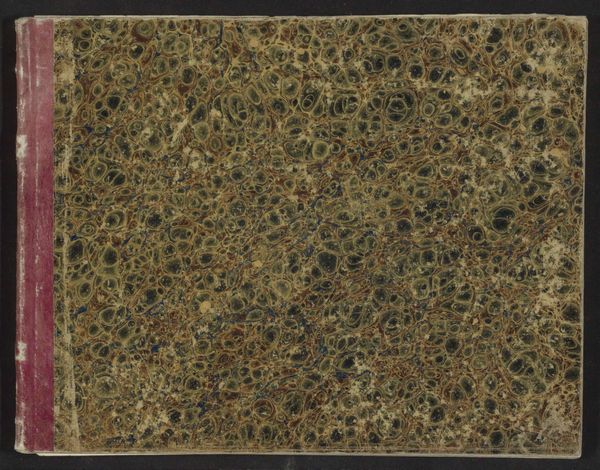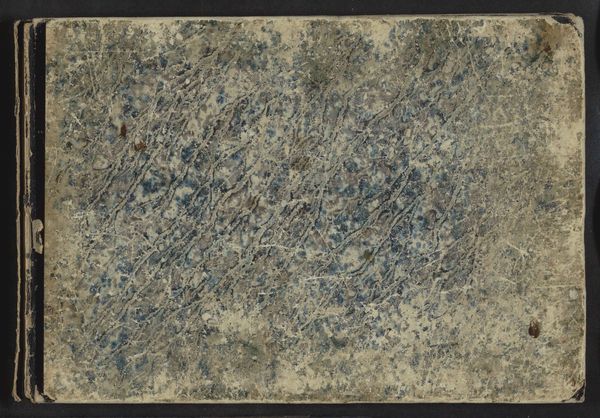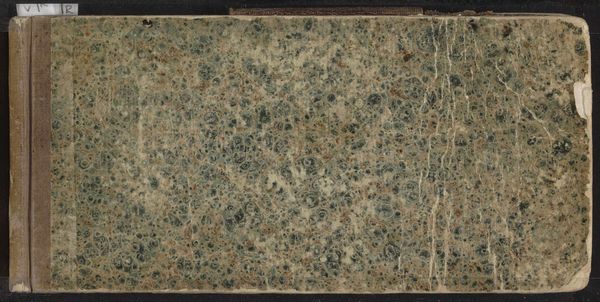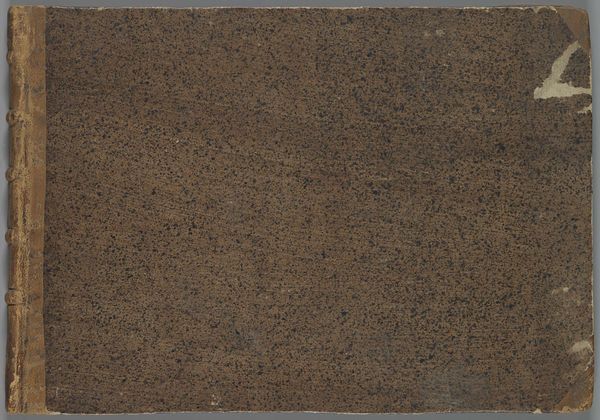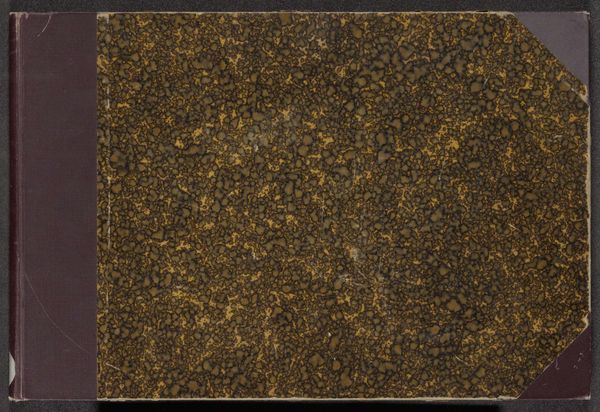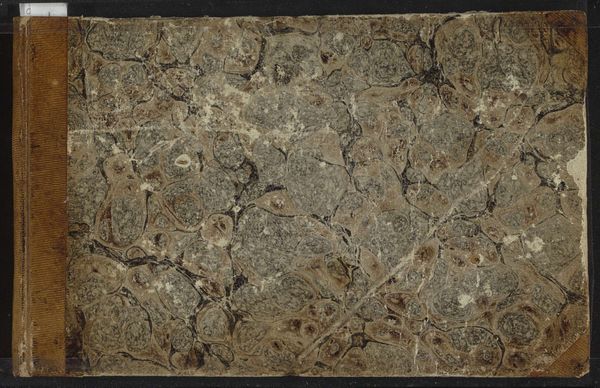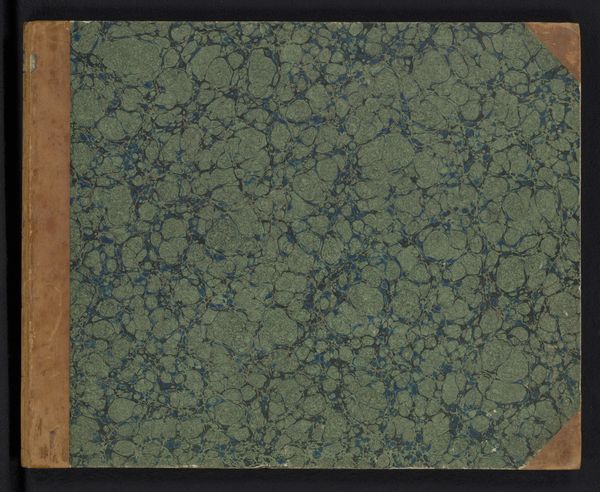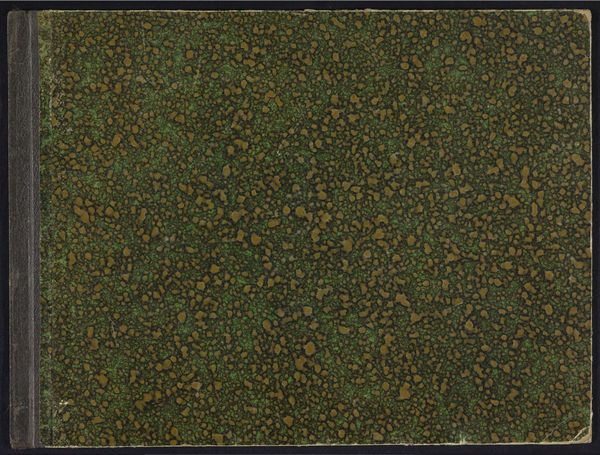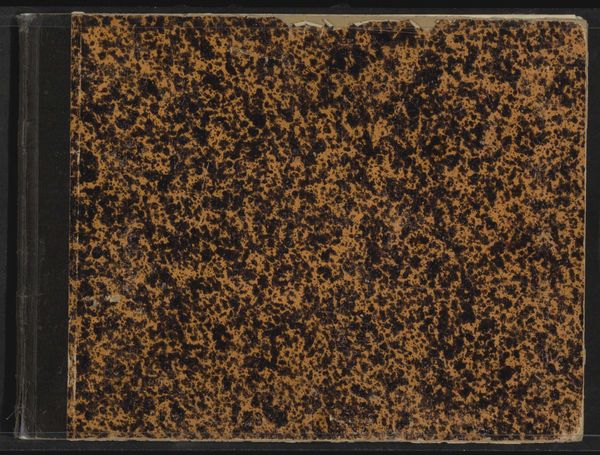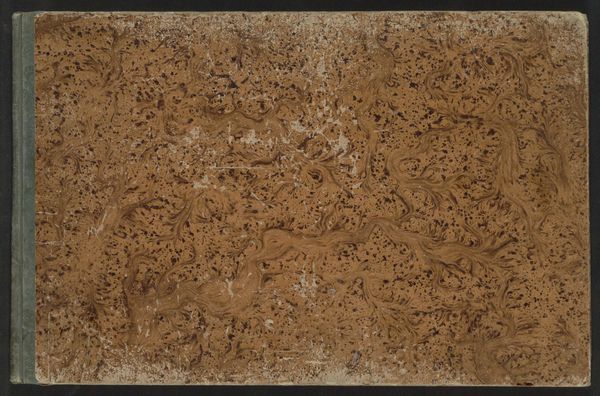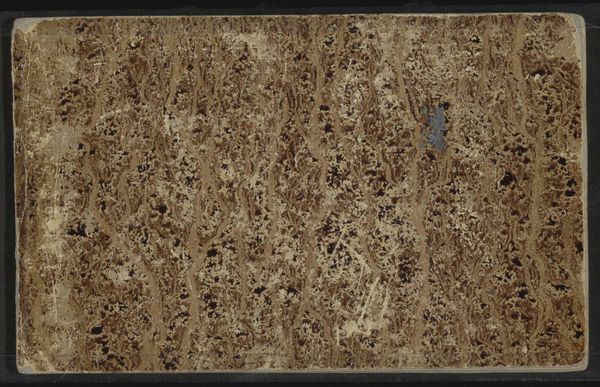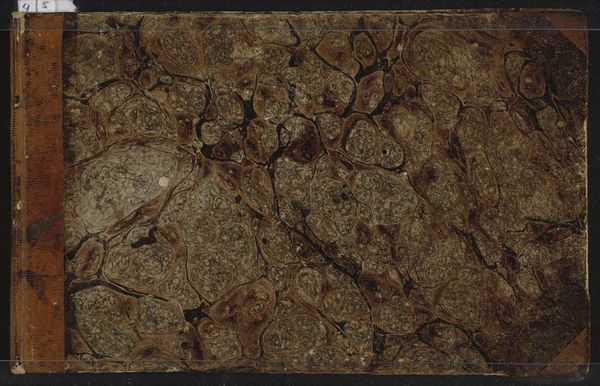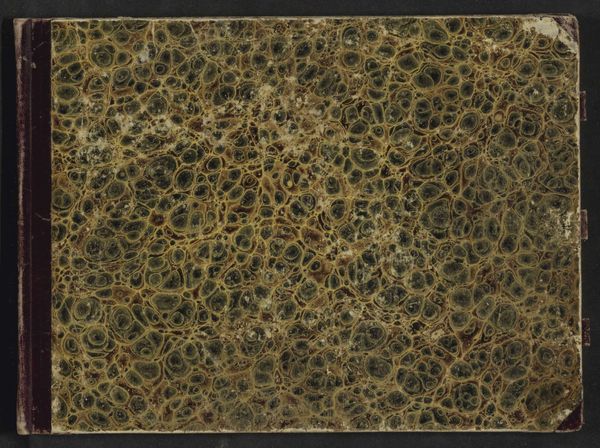
drawing, paper
#
portrait
#
drawing
#
landscape
#
paper
#
romanticism
Dimensions: height 211 mm, width 276 mm, thickness 10 mm, width 548 mm
Copyright: Rijks Museum: Open Domain
Editor: So this is "Sketchbook with 26 leaves," created around 1830 by Jacobus Everhardus Josephus van den Berg. It's made with drawing on paper. The cover seems to have this abstract almost topographical texture. What do you see in this piece in the context of its time? Curator: What intrigues me is not only what's inside the sketchbook – which includes portrait and landscape sketches placing it firmly within Romantic ideals – but the sketchbook itself as an object. It reflects the rise of artistic tourism and the democratisation of art in the 19th century. These smaller scale sketches suggests a portability – were these landscapes images designed for display or personal collection? Editor: That’s a fascinating point! Did owning a sketchbook become fashionable? Curator: Absolutely. The Industrial Revolution enabled the mass production of paper and art supplies. Simultaneously, increased social mobility and the growing middle class created a market for artistic leisure activities, especially tourism. So, carrying a sketchbook became almost a symbol of refinement and education, signaling an appreciation for the aesthetic and the picturesque in new accessible ways. Can you think about the relationship between those accessible representations and the social structures of 19th century Europe? Editor: It's almost like early Instagram for landscape! The commodification of seeing places is so apparent, in a portable, tangible way. Thanks, I never would have thought of a sketchbook as a status symbol tied to industry! Curator: It reveals so much about the shifting landscape of artistic production and consumption during a transformative period. A small object can tell us a lot.
Comments
No comments
Be the first to comment and join the conversation on the ultimate creative platform.
